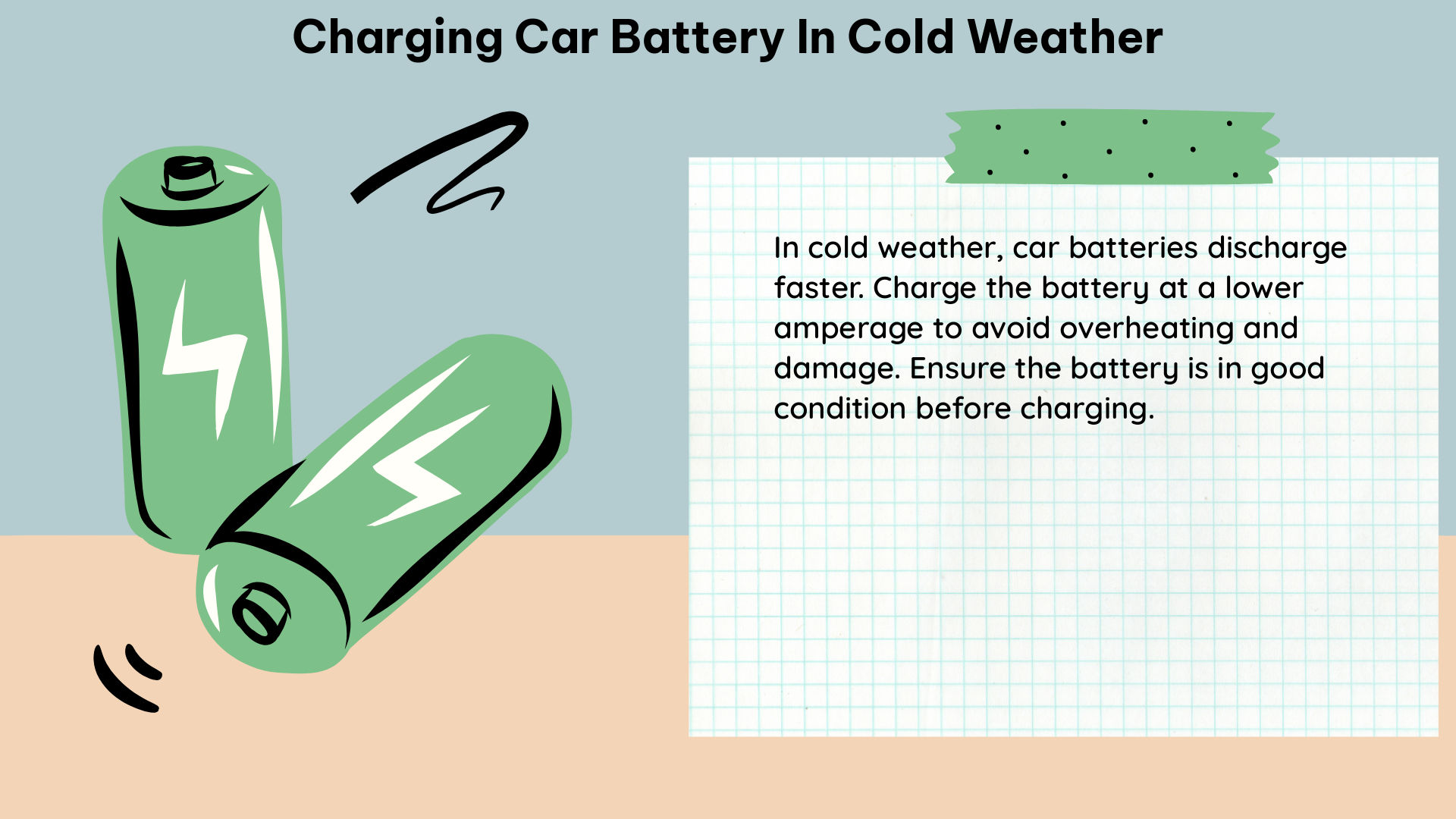Charging a car battery in cold weather can be a challenging task due to the impact of low temperatures on the electrochemical reactions within the battery cell and the battery management systems that limit the charging rate to avoid damage. This comprehensive guide will provide you with the technical details and practical strategies to effectively charge your car battery in cold weather conditions.
Understanding the Impact of Cold Temperatures on Battery Charging
The performance of a car battery is heavily influenced by the surrounding temperature. When the temperature drops, the chemical reactions within the battery cell slow down, reducing the battery’s ability to accept and store charge efficiently.
According to a study conducted by the Idaho National Laboratory, the charging time for an electric vehicle (EV) battery can increase significantly in cold weather. When an EV battery was charged at 77°F (25°C), a Direct Current Fast Charger (DCFC) was able to charge the battery to 80% capacity in just 30 minutes. However, at 32°F (0°C), the battery’s state of charge was 36% less after the same amount of time.
The study also found that as the temperature decreased, the charging rate slowed down. Under the coldest conditions, the charging rate was roughly three times slower than at warmer temperatures. This is a critical finding for both the EV industry and individual drivers, as it highlights the challenges that need to be addressed to ensure efficient charging in cold weather.
Technical Specifications and Charging Performance

The Idaho National Laboratory study used data from a fleet of Nissan Leaf EVs operated as taxis, with over 500 DCFC charging events. The temperature range for these charging sessions was between 15°F (-9°C) and 103°F (39°C).
The key findings from the study include:
| Temperature | Charging Time to 80% Capacity |
|---|---|
| 77°F (25°C) | 30 minutes |
| 32°F (0°C) | 36% less charge in 30 minutes |
These results demonstrate the significant impact of cold temperatures on the charging performance of EV batteries. The more the temperature dropped, the longer it took to charge the battery, with the charging rate being roughly three times slower under the coldest conditions compared to warmer temperatures.
Factors Influencing Cold Weather Charging Challenges
While the impact of cold weather on EV charging is a concern, it is important to note that it primarily affects specific circumstances, such as:
-
Taxi and Commercial Vehicles: Vehicles that operate on a tight schedule and need to be charged frequently, such as taxis and commercial fleets, may face more challenges in cold weather.
-
Long-Distance Trips: EV drivers who embark on long-distance trips in cold weather may encounter slower charging times, which can impact their travel plans and range.
-
Apartment Dwellers: Individuals who live in apartments and do not have access to dedicated charging infrastructure may face more difficulties in keeping their EV batteries warm and charged during cold weather.
-
Affordable EVs with Smaller Batteries: More affordable EVs with smaller battery packs may require more frequent charging, making them more susceptible to the effects of cold weather on charging performance.
Mitigating the Impact of Cold Temperatures on EV Charging
To address the challenges of charging car batteries in cold weather, it is recommended to precondition the EV battery prior to a charging session. Preconditioning the battery ensures that the chemical reactions involved in the charging process happen at a relatively normal rate, which not only accelerates the charging speeds but also protects the battery from long-term damage.
Preconditioning the battery typically involves using the vehicle’s onboard systems to warm the battery to an optimal temperature range before initiating the charging process. This can be done by plugging in the vehicle and allowing the battery management system to warm the battery, or by using a dedicated battery preconditioning system.
Some additional strategies to mitigate the impact of cold weather on EV charging include:
-
Garage or Covered Parking: Storing the EV in a garage or under a covered parking structure can help maintain the battery’s temperature and improve charging performance.
-
Heated Charging Stations: The deployment of heated charging stations, which can actively warm the battery during the charging process, can help offset the effects of cold weather.
-
Battery Thermal Management Systems: Advancements in battery thermal management systems, which can actively regulate the battery temperature, can also contribute to improved charging performance in cold weather.
-
Charging Optimization Algorithms: Developing more sophisticated charging algorithms that can adapt to changing environmental conditions, including temperature, can help optimize the charging process and mitigate the impact of cold weather.
Conclusion
Charging a car battery in cold weather can be a challenging task, but with the right knowledge and strategies, EV drivers can overcome these obstacles. By understanding the technical details and factors that influence cold weather charging performance, as well as implementing effective mitigation techniques, EV owners can ensure their vehicles are charged efficiently and protected from long-term battery damage, even in the harshest of winter conditions.
References:
– Idaho National Laboratory Study on EV Charging in Cold Temperatures
– Quantifying the Negative Impact of Charging EVs in Cold Temperatures
– Study: EV Charging Speeds in Cold Temperatures
– Cold Weather Causes Challenges for Electric Vehicle Owners
– How Does Cold Weather Affect Electric Vehicles?

The lambdageeks.com Core SME Team is a group of experienced subject matter experts from diverse scientific and technical fields including Physics, Chemistry, Technology,Electronics & Electrical Engineering, Automotive, Mechanical Engineering. Our team collaborates to create high-quality, well-researched articles on a wide range of science and technology topics for the lambdageeks.com website.
All Our Senior SME are having more than 7 Years of experience in the respective fields . They are either Working Industry Professionals or assocaited With different Universities. Refer Our Authors Page to get to know About our Core SMEs.